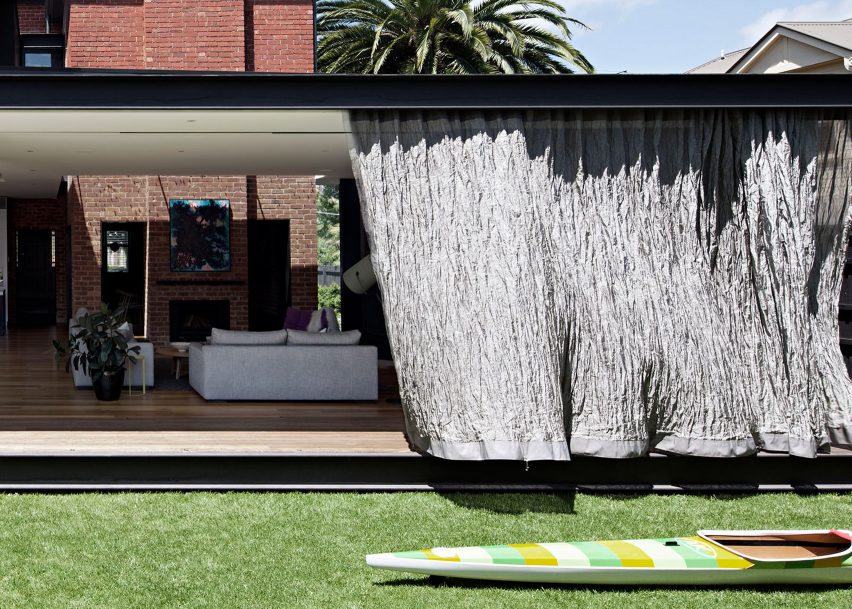
Woven metal-mesh curtain wraps Melbourne house extension designed by Matt Gibson
Australian architect Matt Gibson and his studio have renovated and extended a traditional villa in Melbourne, adding deep verandahs that can be protected from harsh sunlight using woven steel-mesh curtains.
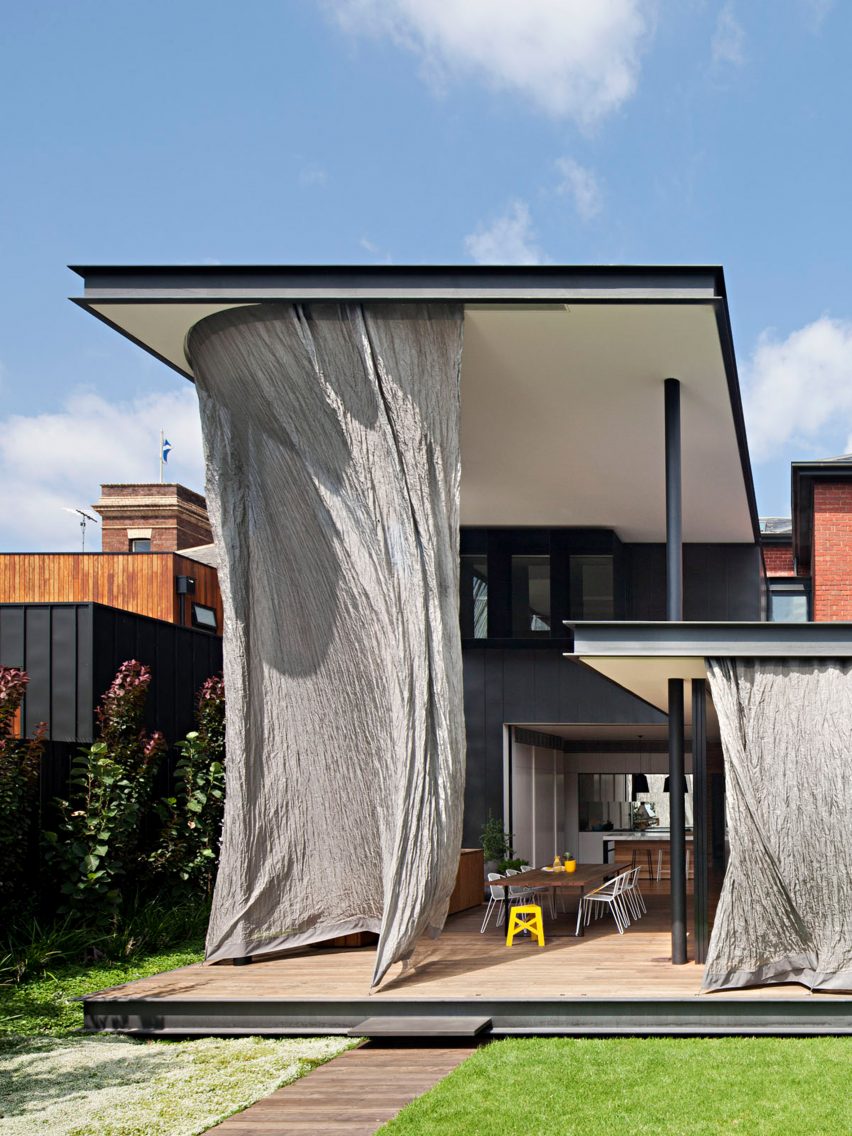
Matt Gibson Architecture + Design was tasked with upgrading the property in the Australian city's Barrington heritage area, in order to create more liveable spaces with a better connection to the large garden for a family of five.
An earlier extension was removed to enable the alterations to the building, which did not seek to increase the overall floor area but rather focused on reorganising the existing rooms to generate an optimised, flexible layout.
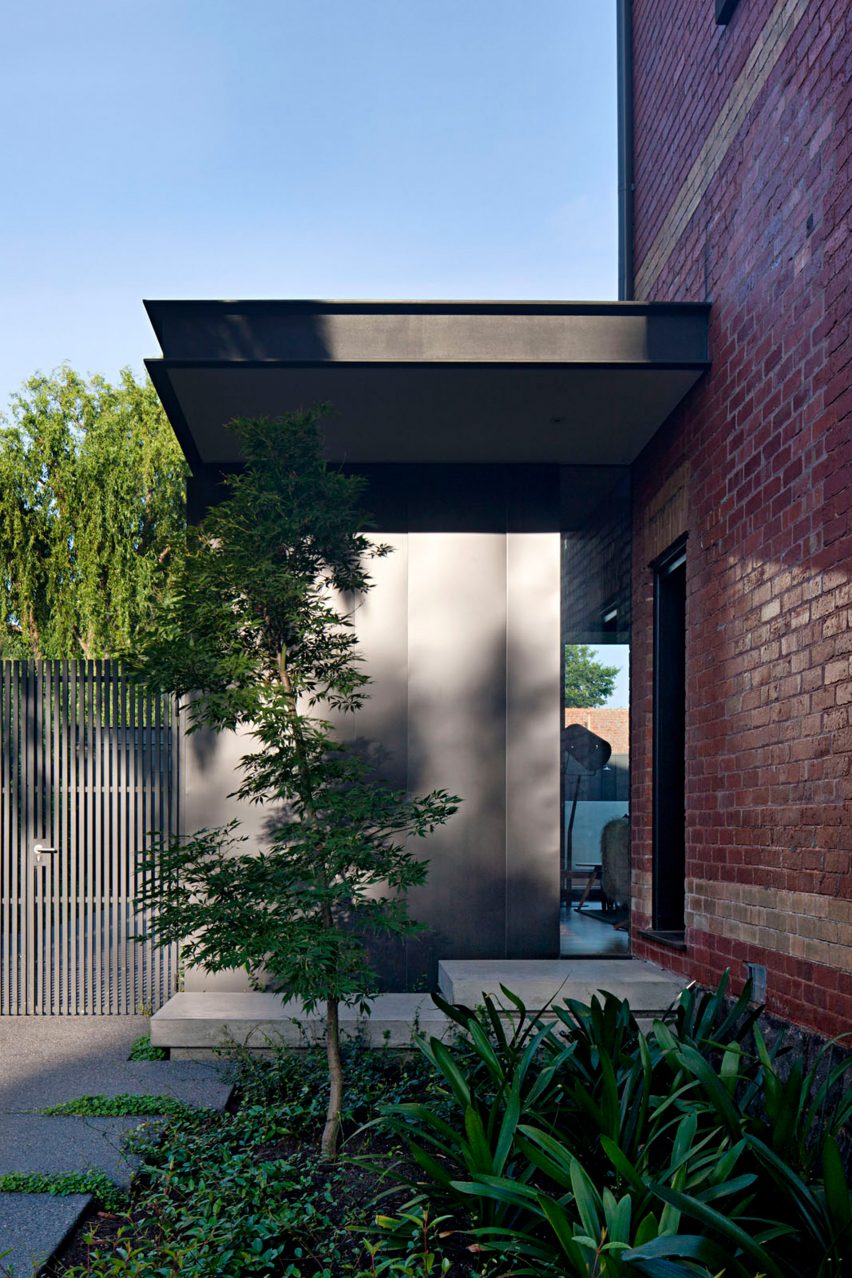
"The contemporary addition challenges the concept of building low quality, replica additions that attach themselves to the heritage fabric and in effect compromise, confuse and diminish the integrity of the original," the studio claimed.
"The intervention here is instead contemporary and interactive," they added, "activating and opening up the compartmentalised interior to previously under-utilised green space, and at the same time preserving and augmenting the cultural significance of the original building."
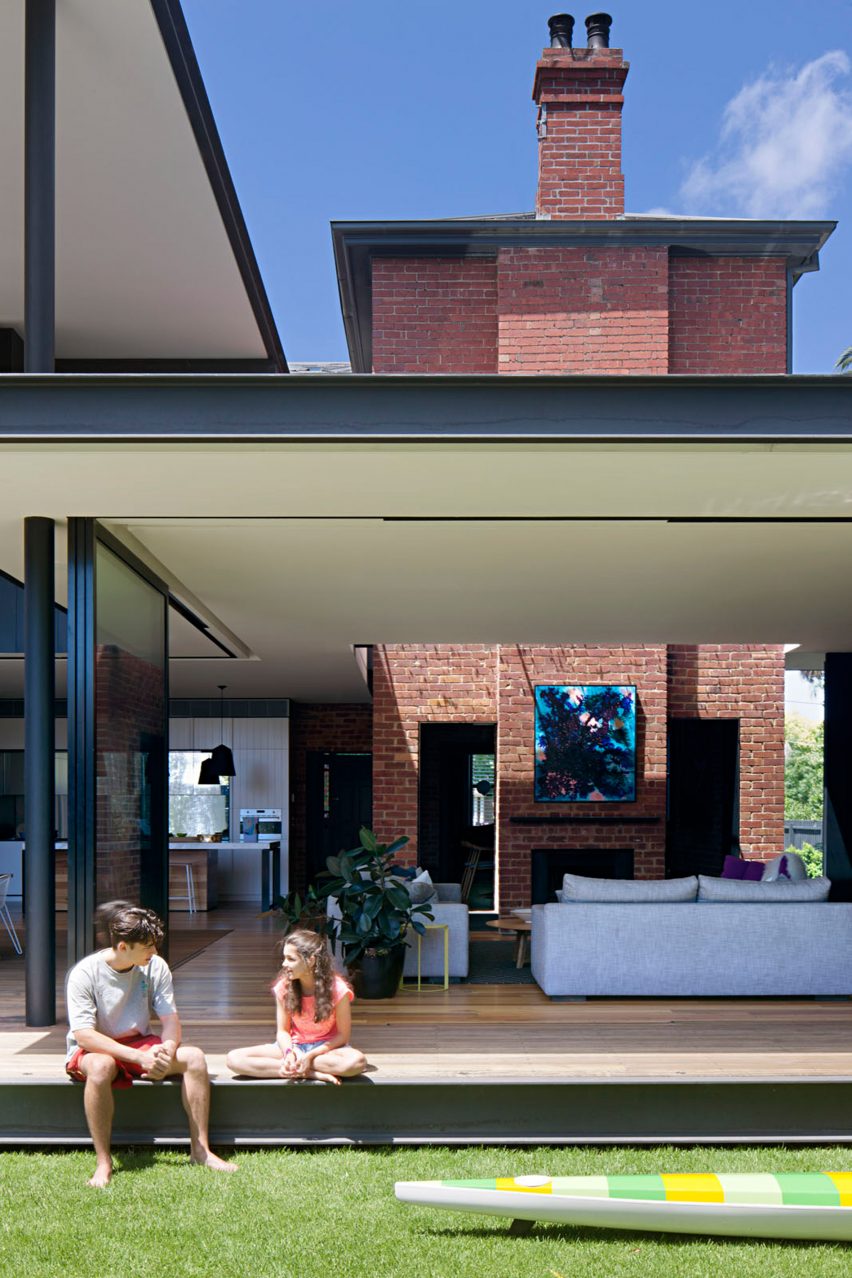
The need to create a new sheltered outdoor space for year-round dining prompted the project team, led by Japanese architect Erica Tsuda, to seek out a solution that would limit glare resulting from the west-facing orientation.
The architects chose to adapt a traditional Japanese concept known as "Hiro-En", where deep verandahs are added to rooms to create a usable threshold between indoor and outdoor spaces.
Computer modelling of sunlight and shadow helped to establish how a similar process, involving the accurate placement of canopies at different heights, could shelter the living spaces from summer sun while admitting it during winter.
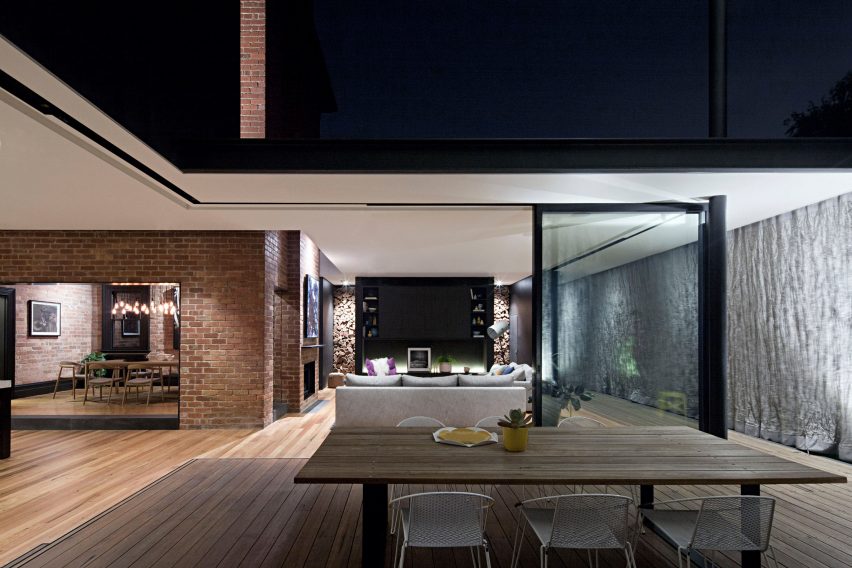
The extensions project from the building's western elevation towards the garden, and incorporate sliding walls that can be opened up to create a seamless connection with the garden.
These canopies are also fitted with curtains made from a woven stainless-steel mesh that functions as a rain screen or, on warmer days, as a protective layer to limit unwanted heat and glare.
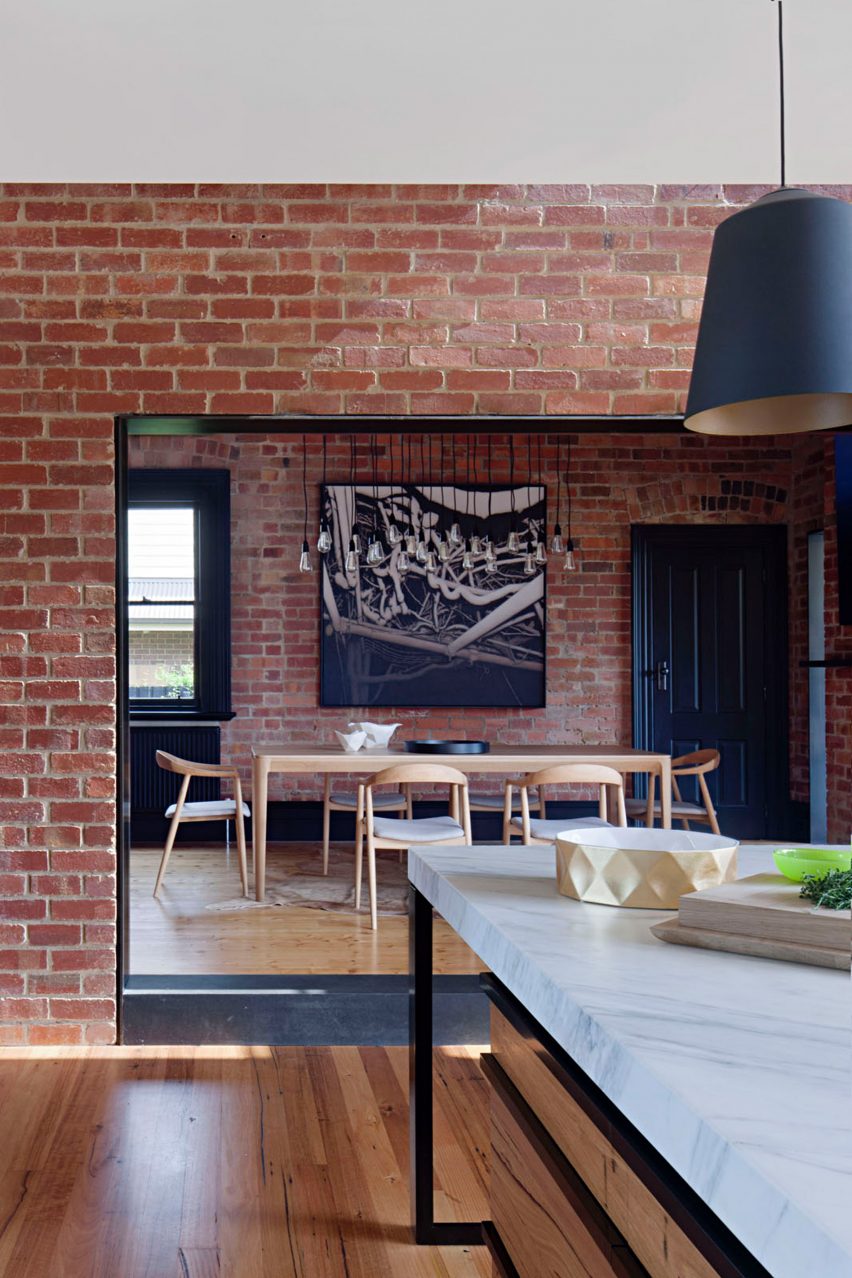
"The sculptural nature of the curtain provides a free flowing and kinetic foil to the permanence and solidity of the heritage structure," the studio suggested.
The curtain's translucency, which alters depending on the viewing angle, enhances the sense of spatial ambiguity between building's indoor and outdoor spaces.
A new bedroom added to the upper floor on the northwest corner of the building is also sheltered by the projecting canopy and the double-height section of the curtain.
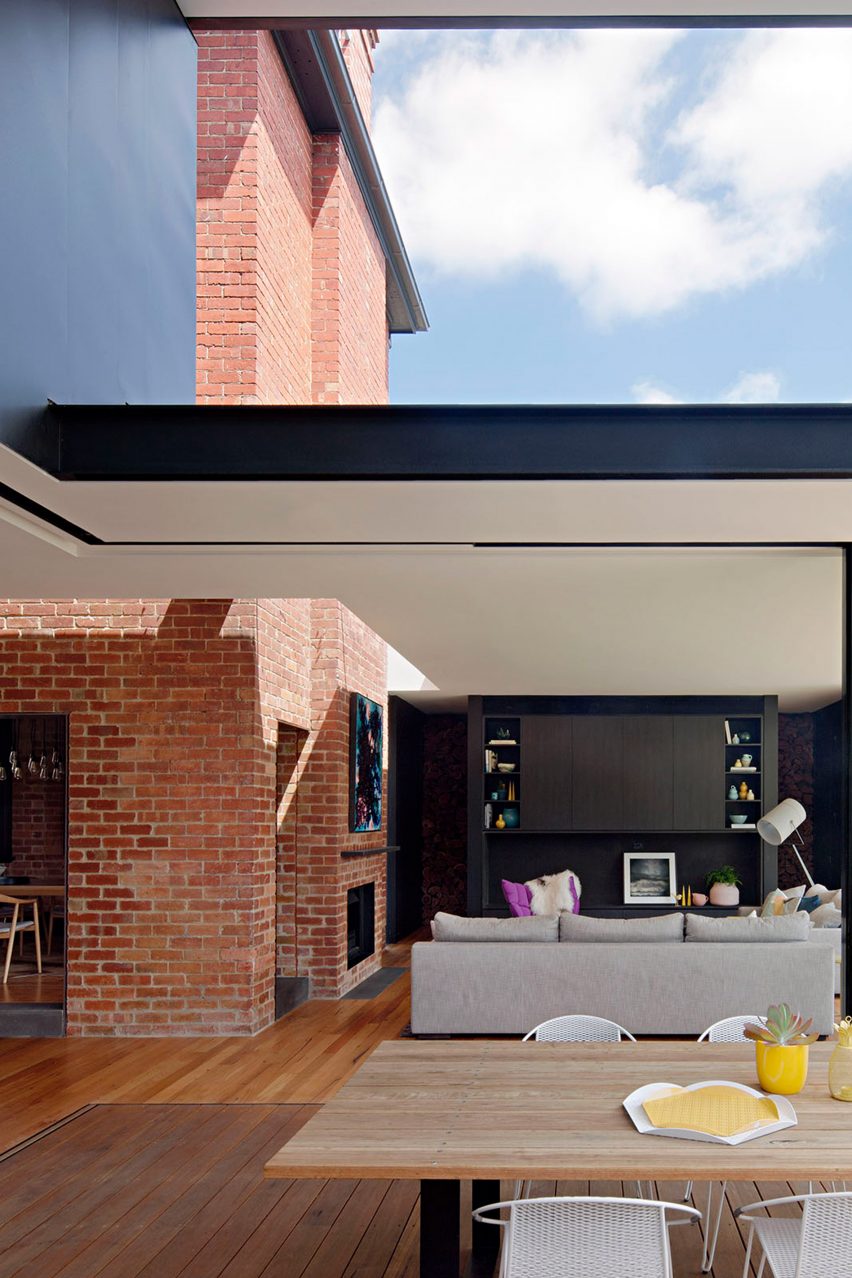
Interventions to the existing building involved opening up the ground floor to create interconnected living spaces. A dining area and kitchen in the old part of the house flows into a lounge in the extension, and straight out onto the external deck.
Original materials and features are retained wherever possible throughout the interior, with external brick walls now forming internal partitions that are pierced by metal-framed openings linking the rooms.
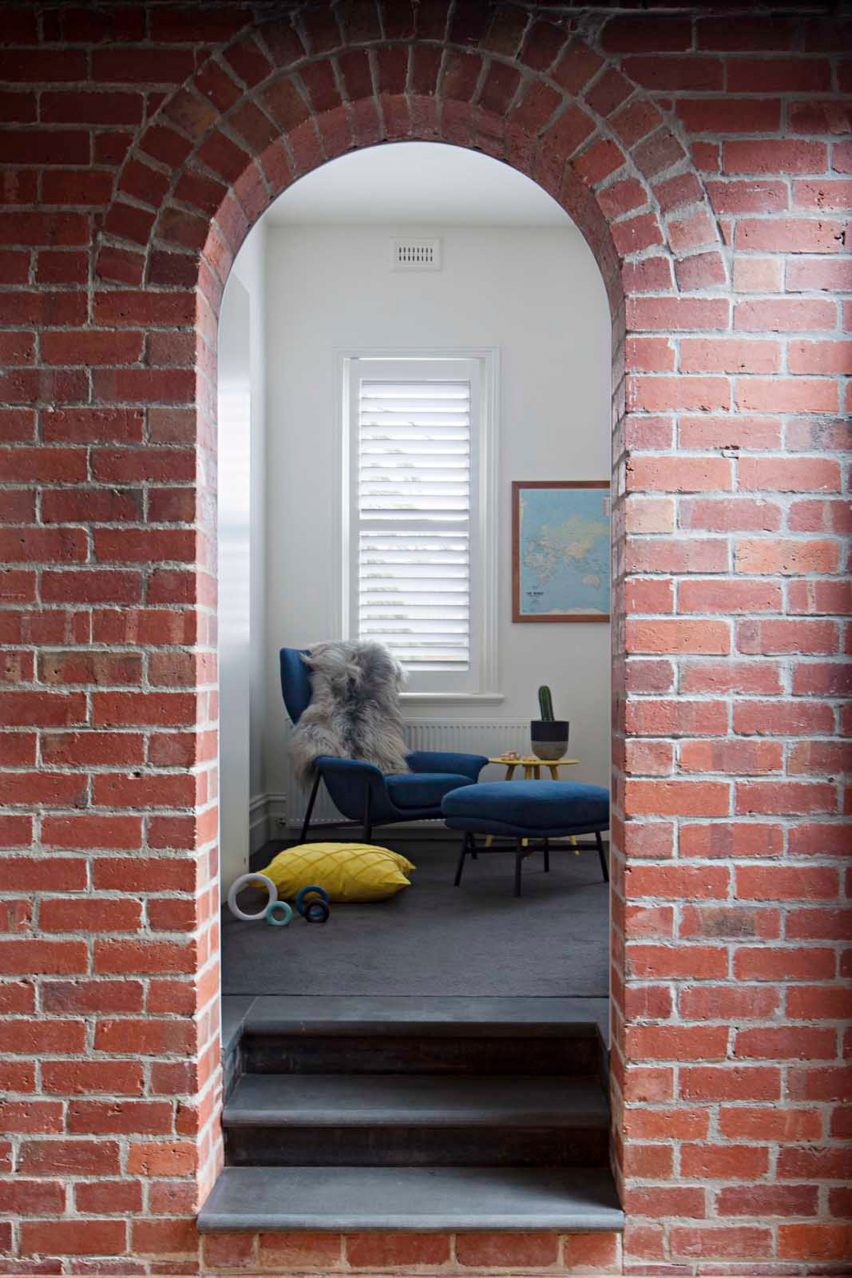
Gaps between the old building and the extension are infilled with glazing to accentuate the transition and allow daylight to filter down into the space. The white ceilings of the extension appear to float unsupported above the new rooms.
"Spaces and eras are distinguishable, yet able to bleed into each other, allowing subtle connectivity," the architects concluded. "Each space, whilst unique, continues a dialogue that is integral to the story of the whole."
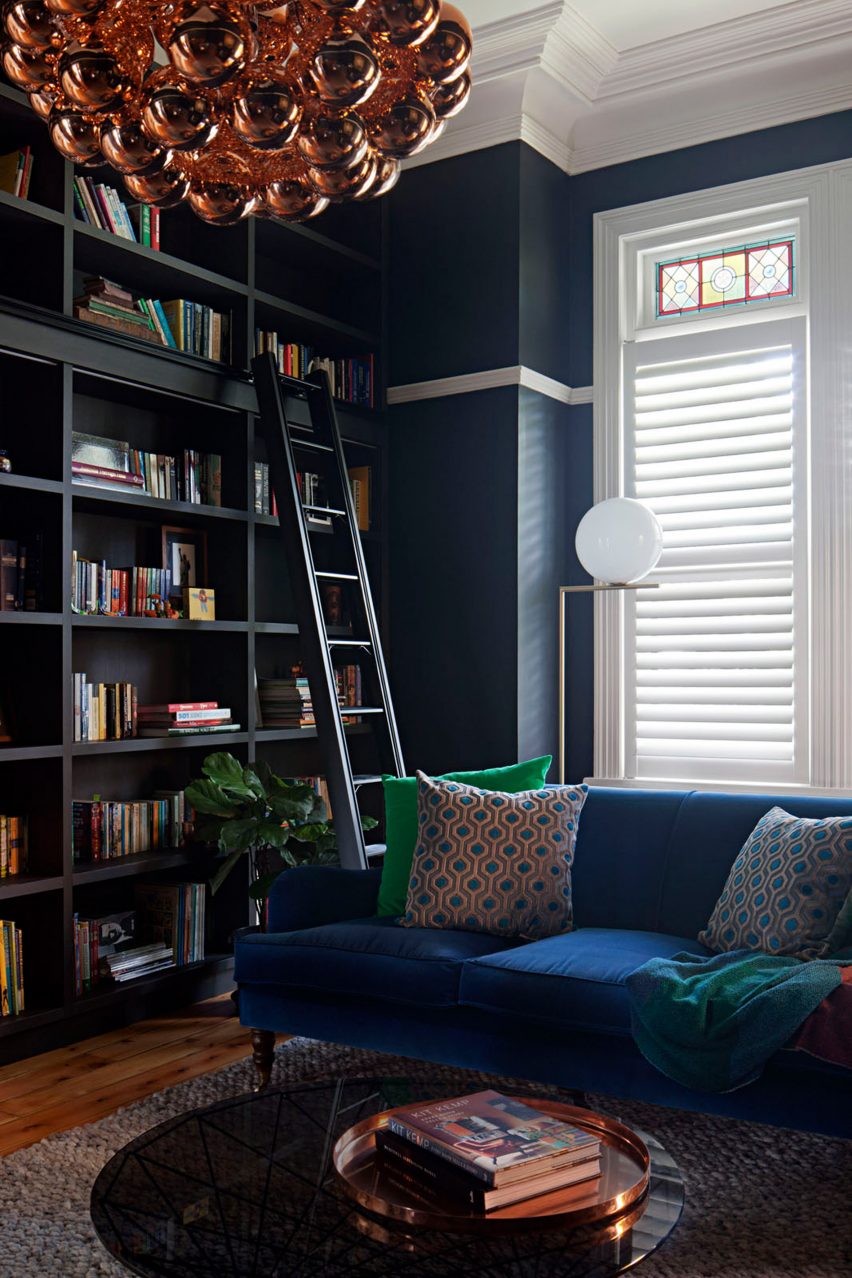
Matt Gibson founded his studio in 2003. His previous residential projects in Melbourne include a zinc-clad, faceted extension to an Edwardian property, and a concrete and stone house influenced by mid-century Brazilian architecture.
Photography is by Shannon McGrath.